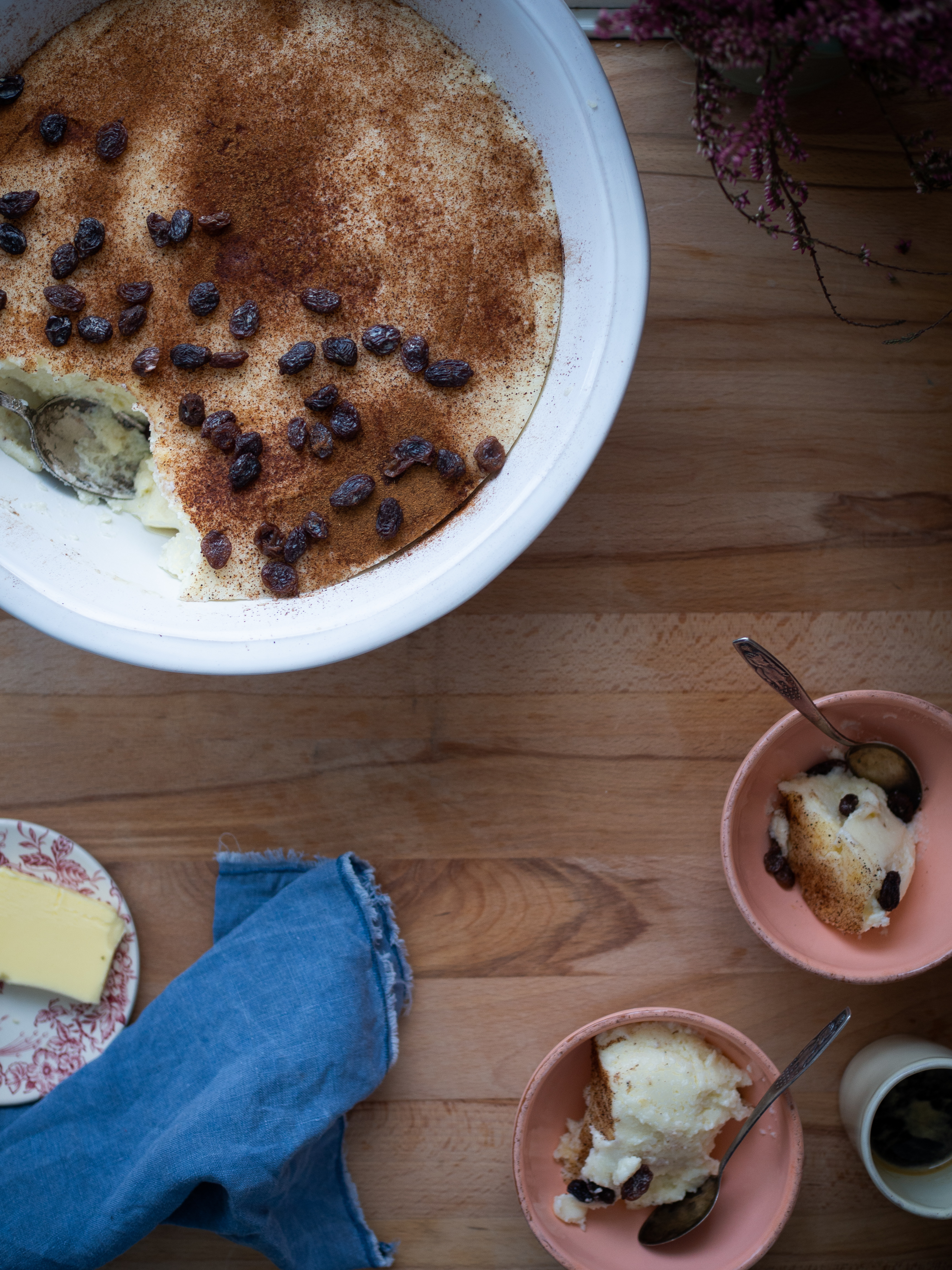
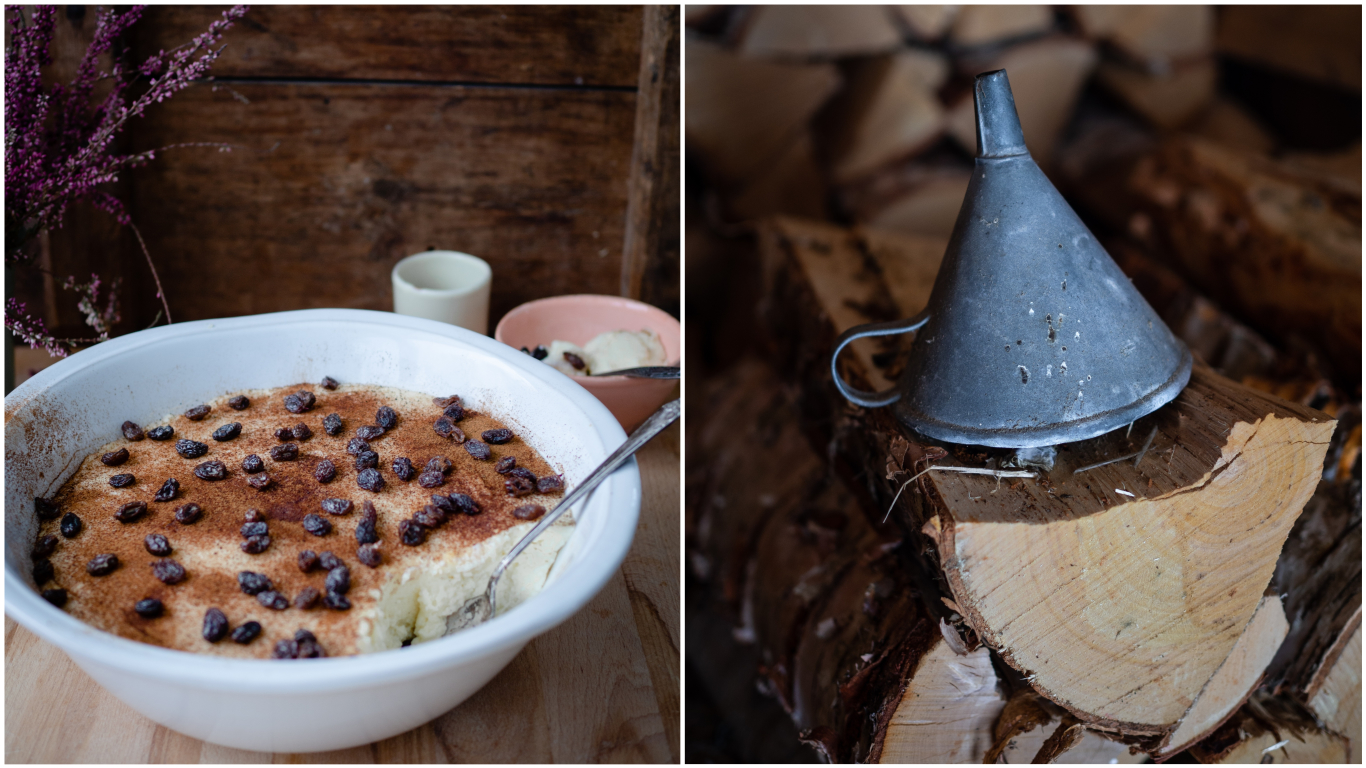
Not long after we moved to Norway, I was served kaffegraut “coffee porridge” at the Rollag Station Kafe in Rollag. It was presented simple enough. A bowl with a thin layer of cinnamon and symmetrically placed raisins on top. What lied beneath the brown layer, though, was unknown to me. I was curious, perhaps even a little skeptical being that it was porridge and all. But one bite in and my slightly tensed shoulders relaxed. My eyes widened as my thoughts began to process what I had just encountered, and I couldn’t help but smile as I took in the smooth textures and subtle buttery and sweet flavors.
After devouring my bowl, I had to find out what this impossibly good porridge was and if the cook would be kind enough to share her recipe. She explained it was kaffegraut, a sweet semolina porridge typically served alongside coffee as a treat. The recipe she was using was from one of Norway’s most traditional homecooks, Bodil Nordjore. The secret: cook it for a long time. A really long time.
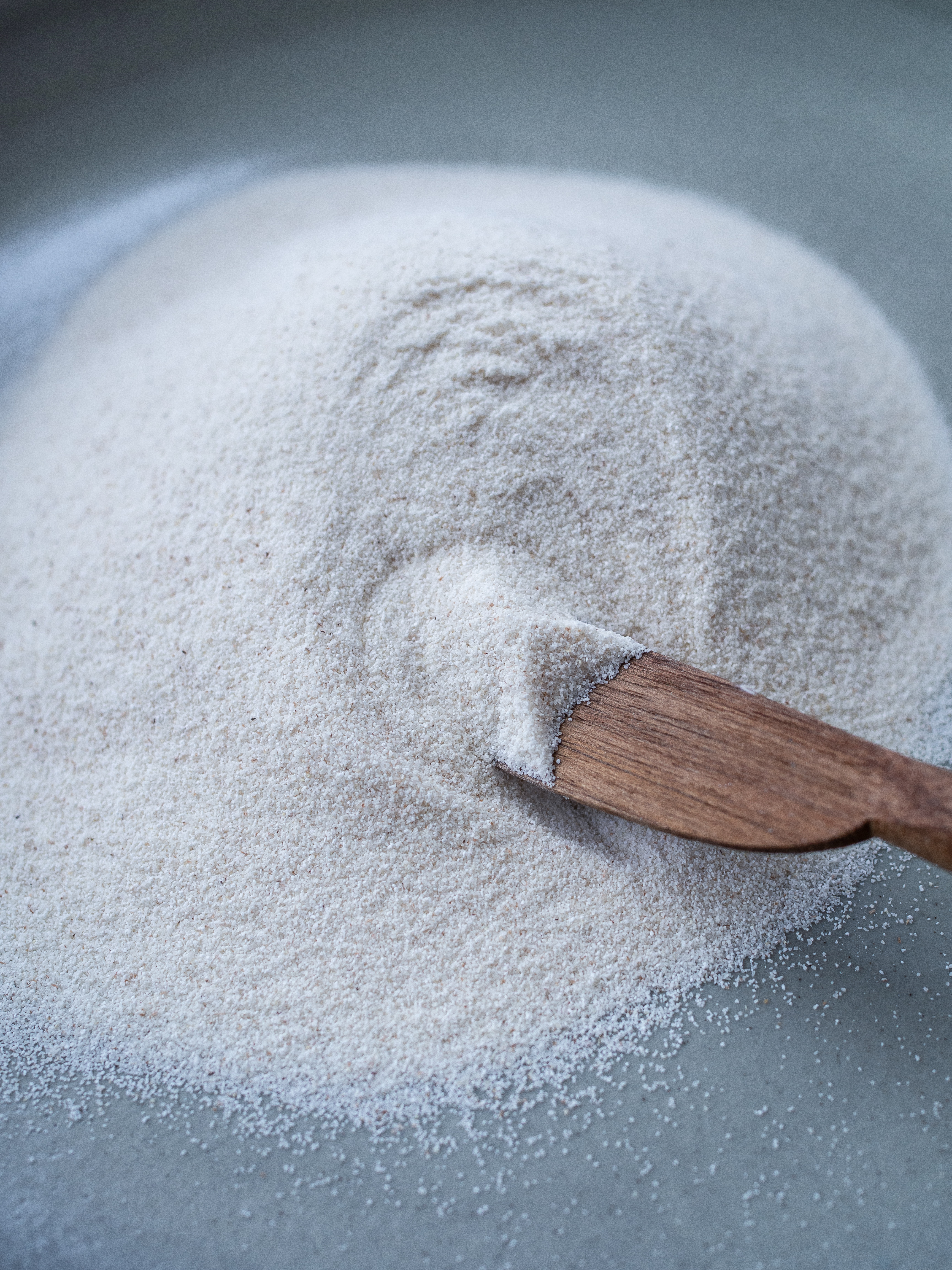
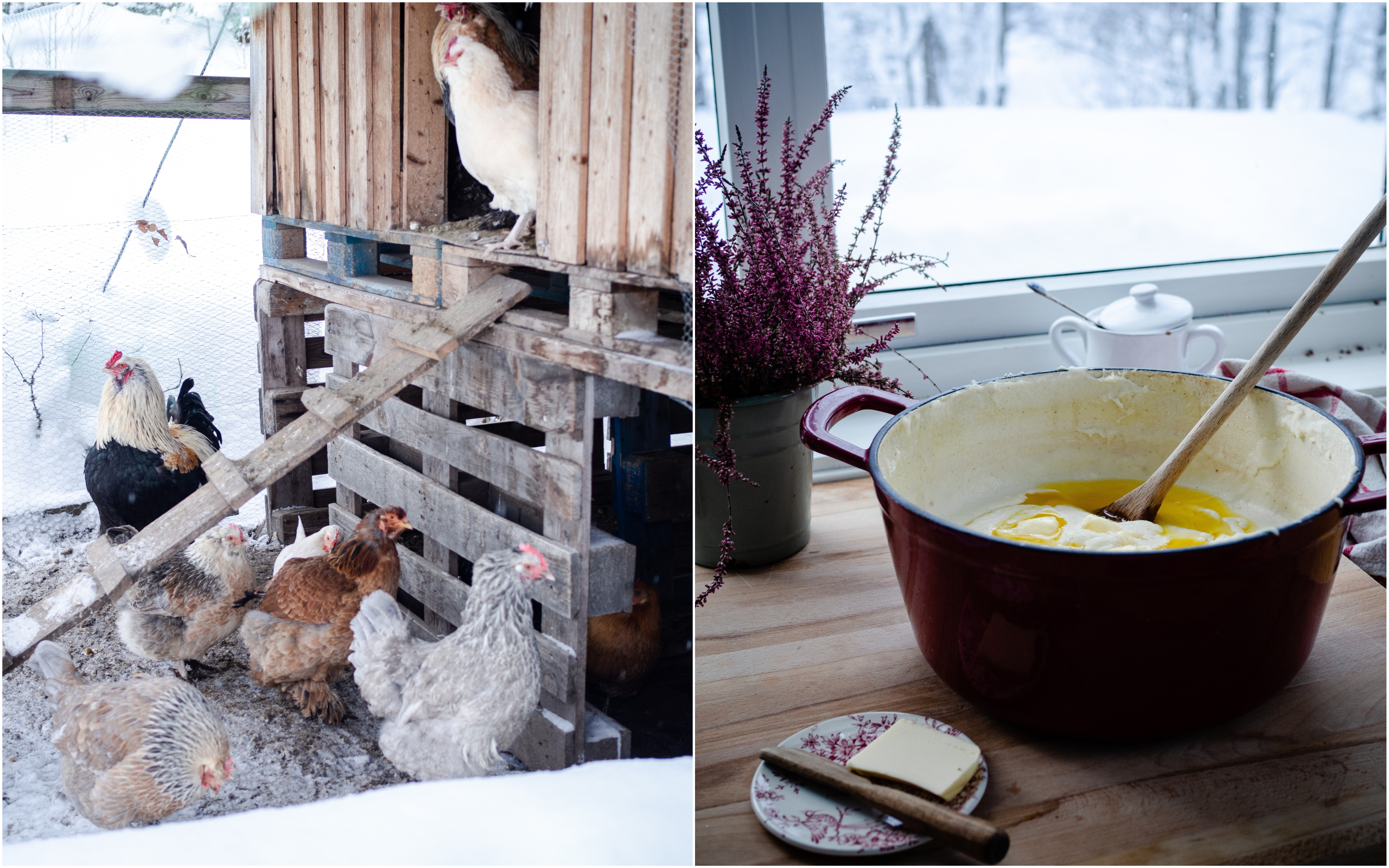
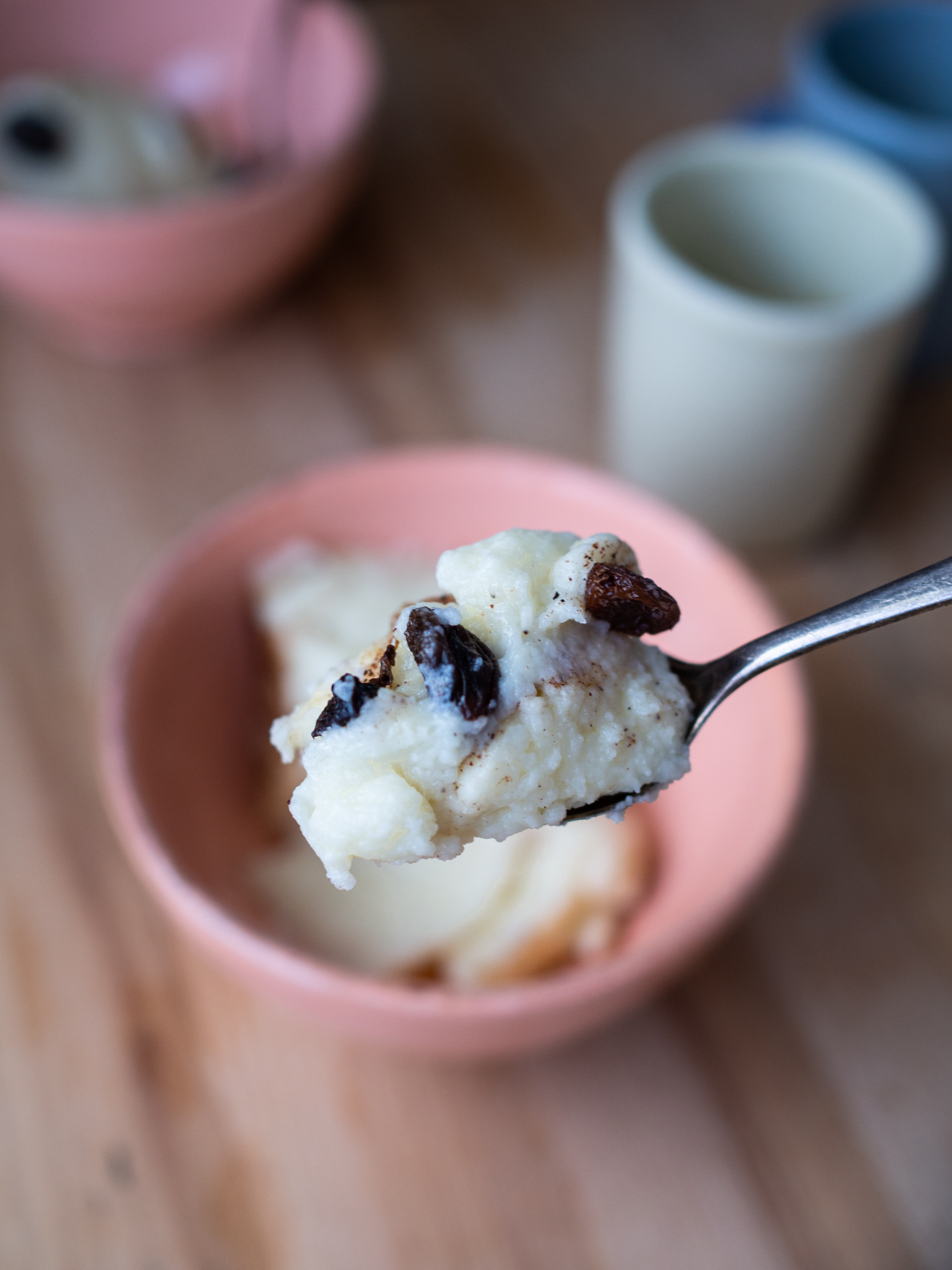
This dish really plays on the whole ‘time and patience will create something magical´ method. The idea and the science behind it is that as the semolina cooks longer, it breaks down so that the porridge almost melts in your mouth. The longer the milk cooks, the more the flavor from the whey intensifies.
According to Bodil, kaffegraut is a traditional festive dish that is found more so in the western part of Norway – each location having their own name for it, such as veitlagraut. It was used in place of serving bløtkake (layered cream cake) during celebrations such as weddings, confirmations and baptisms. This was because it was much more practical to carry the porridge than a cake, in the sense that a cake might not retain its shape after a long journey – and I think we have all experienced when a cake comes out of the box not looking quite the way it was intended to. That’s what makes this porridge so unique, it doesn’t look or sound like much, but it can easily be a substitute for one of Norway’s most beloved cakes.
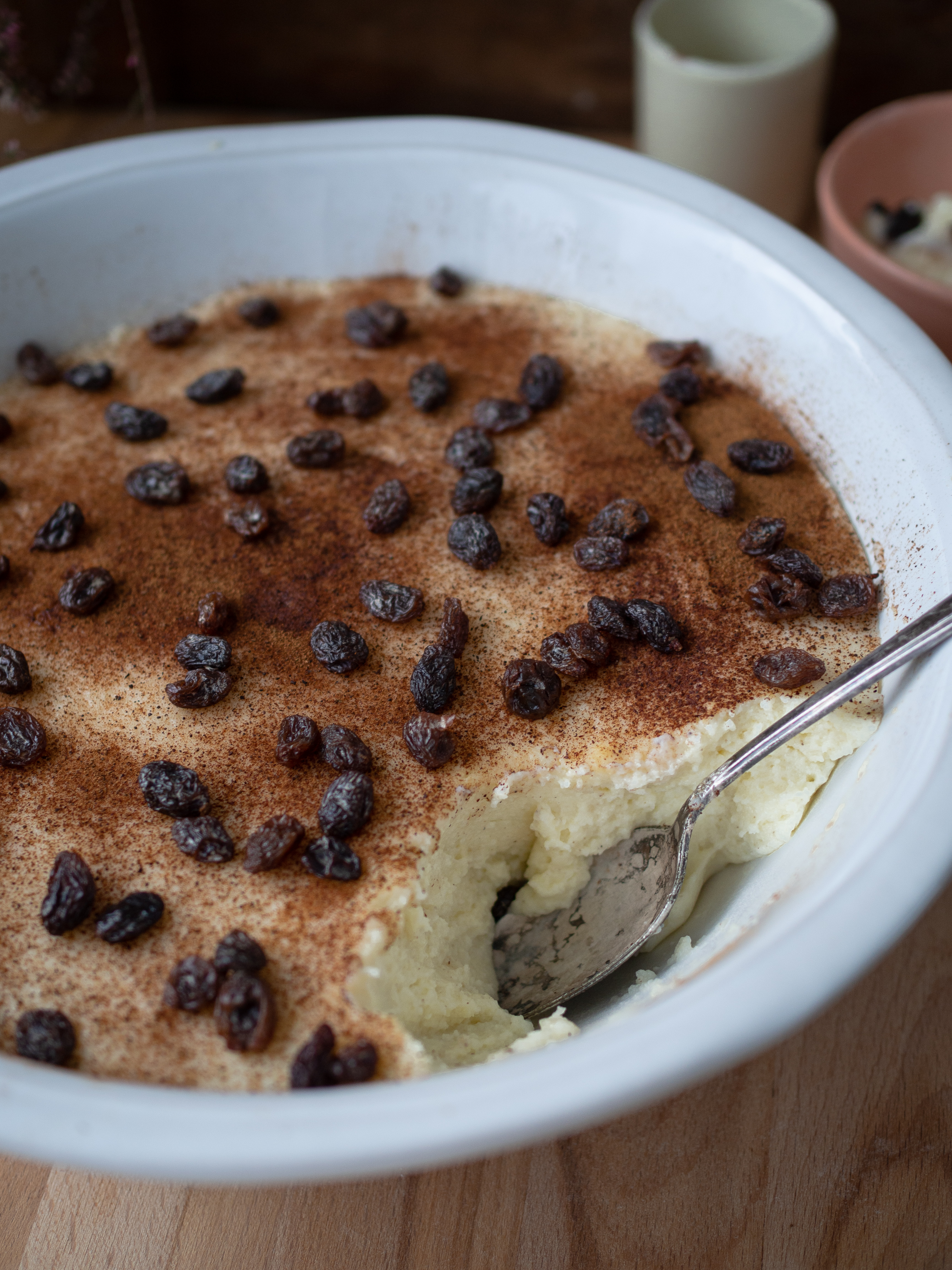
This sweet porridge is smooth and creamy and just melts in your mouth. A treat to go alongside your coffee or drink of choice. While some recipes recommend a cooking time of three hours, I found two hours was quite sufficient. If you are short on time, by all means you can cook it for an hour, but I recommend no less to ensure you get enough time to break down the semolina and intensify the flavor. If you are good for time, then go for three hours.
I like to soak my raisins in coffee to plump them up before serving and give them a little more flavor. You can do this with hot water if you don’t wish to use coffee, or you can just use raisins straight from the container.
Kaffegraut (Norwegian Semolina Porridge)
Serves a party (around 10-12)
- 8 ½ cups (2 liters) whole milk
- 1 cup (240 ml) heavy cream
- 1 cup plus 2 ½ tablespoons (200 g) semolina
- 1 teaspoon salt
- 1 cup (200 g) granulated sugar
- ¾ cup (170 g) cold butter, cut in pieces
To serve:
- ¼ cup (60 ml) raisins
- 1 shot espresso (optional)
- Cinnamon
In a large, heavy-bottomed pot, warm up the milk and heavy cream just before the mixture begins to boil. Whisk in the semolina and salt, ensuring no clumps are forming. Reduce the heat to low and gently simmer for 2 to 3 hours, stirring often to ensure the porridge doesn’t brown on the bottom (it’s ok to carry on doing other things while the porridge is cooking, just be sure to check it often enough).
Remove the porridge from the stove. Add the sugar and stir until it melts into the porridge. Follow with the butter and stir well. The porridge should be glossy now and slide around the pot as you stir. Pour the porridge in a large serving bowl. When cooled down some, place the bowl in the refrigerator (covered with plastic wrap) for at least an hour to chill.
Optional: Soak the raisins in a shot of hot espresso or strong coffee to soften them for about 30 minutes before serving.
When ready to serve, sprinkle on a good layer of cinnamon and place the raisins (soaked in coffee or not) on top. Enjoy!
S
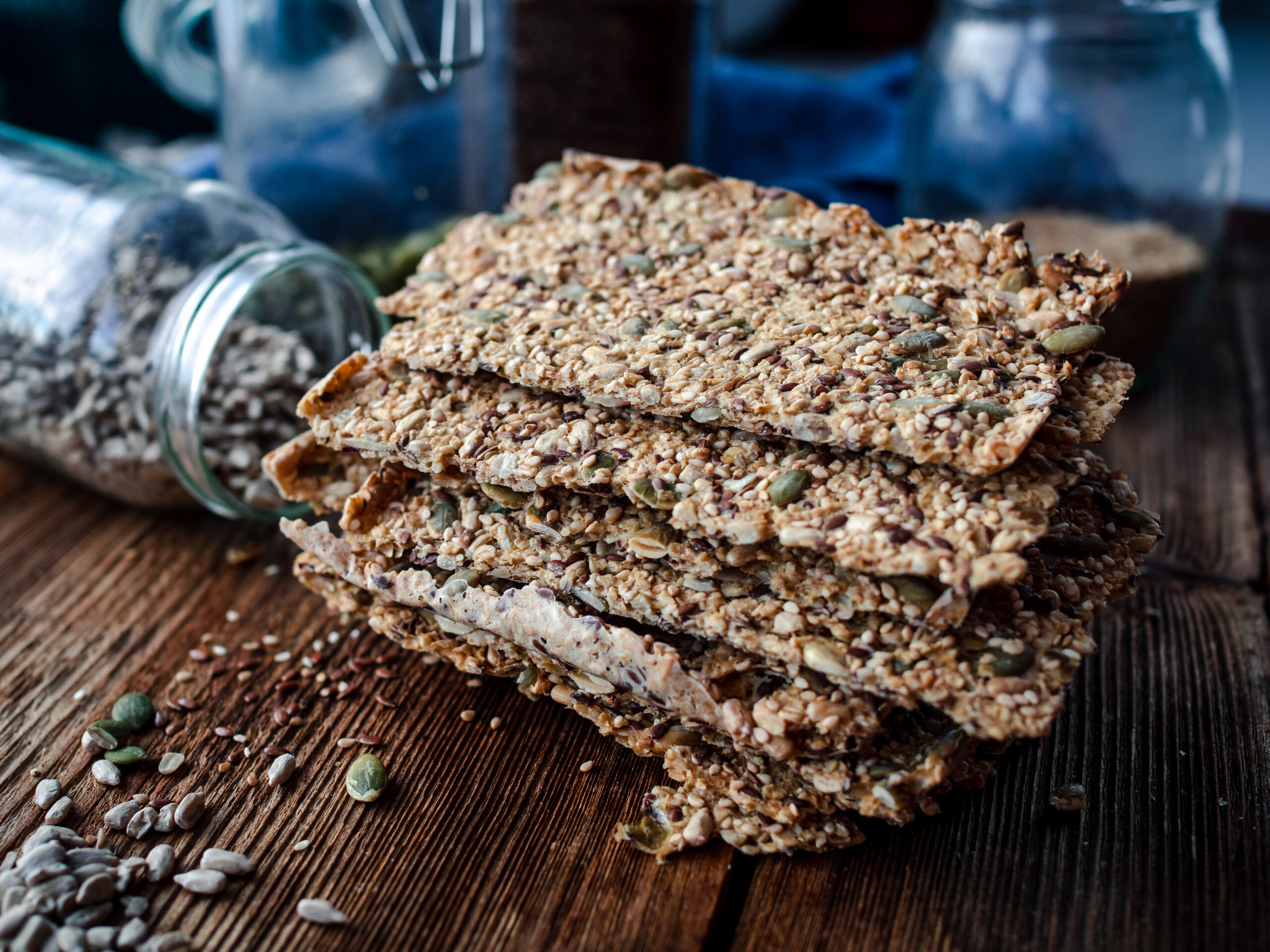

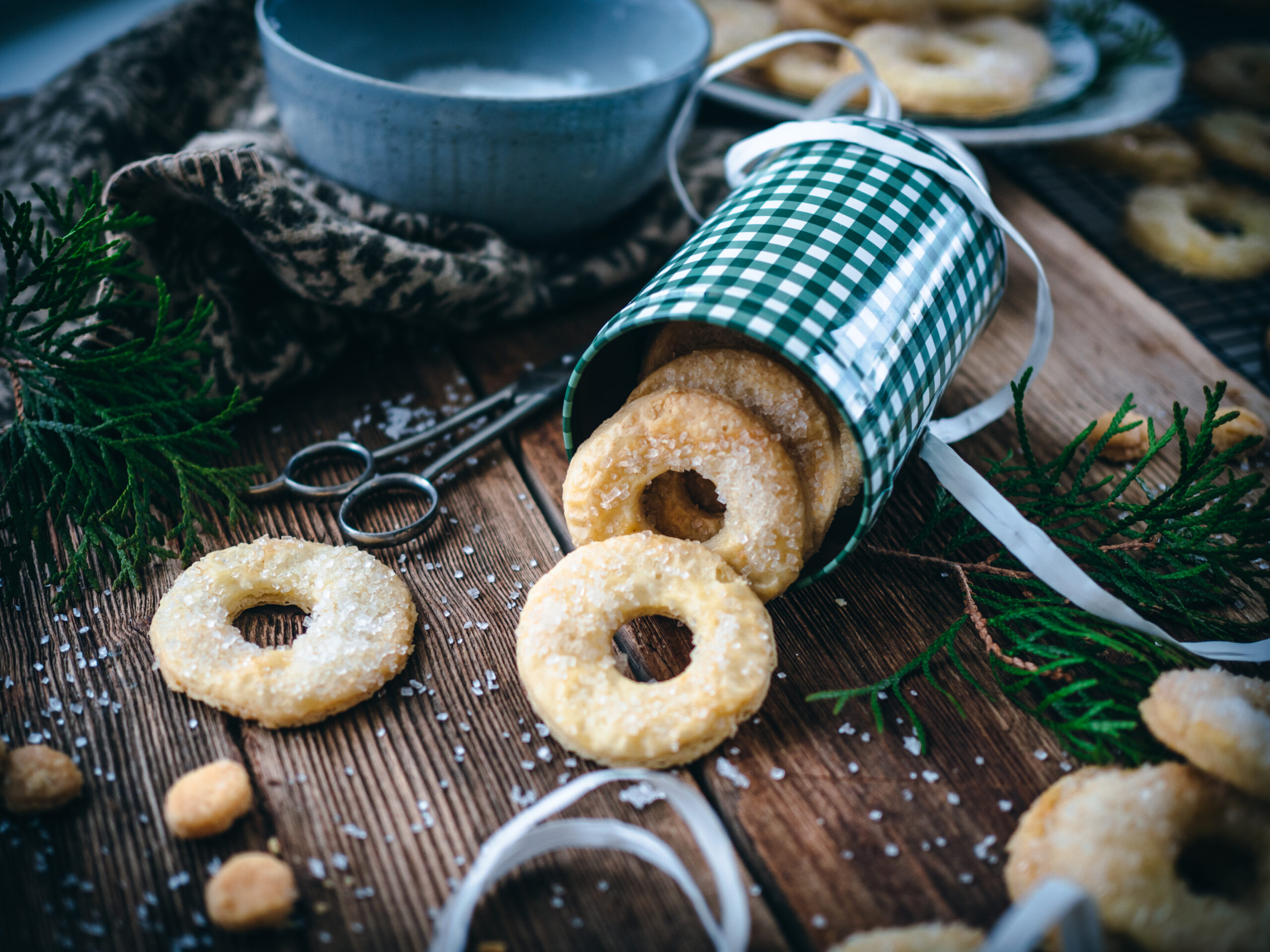
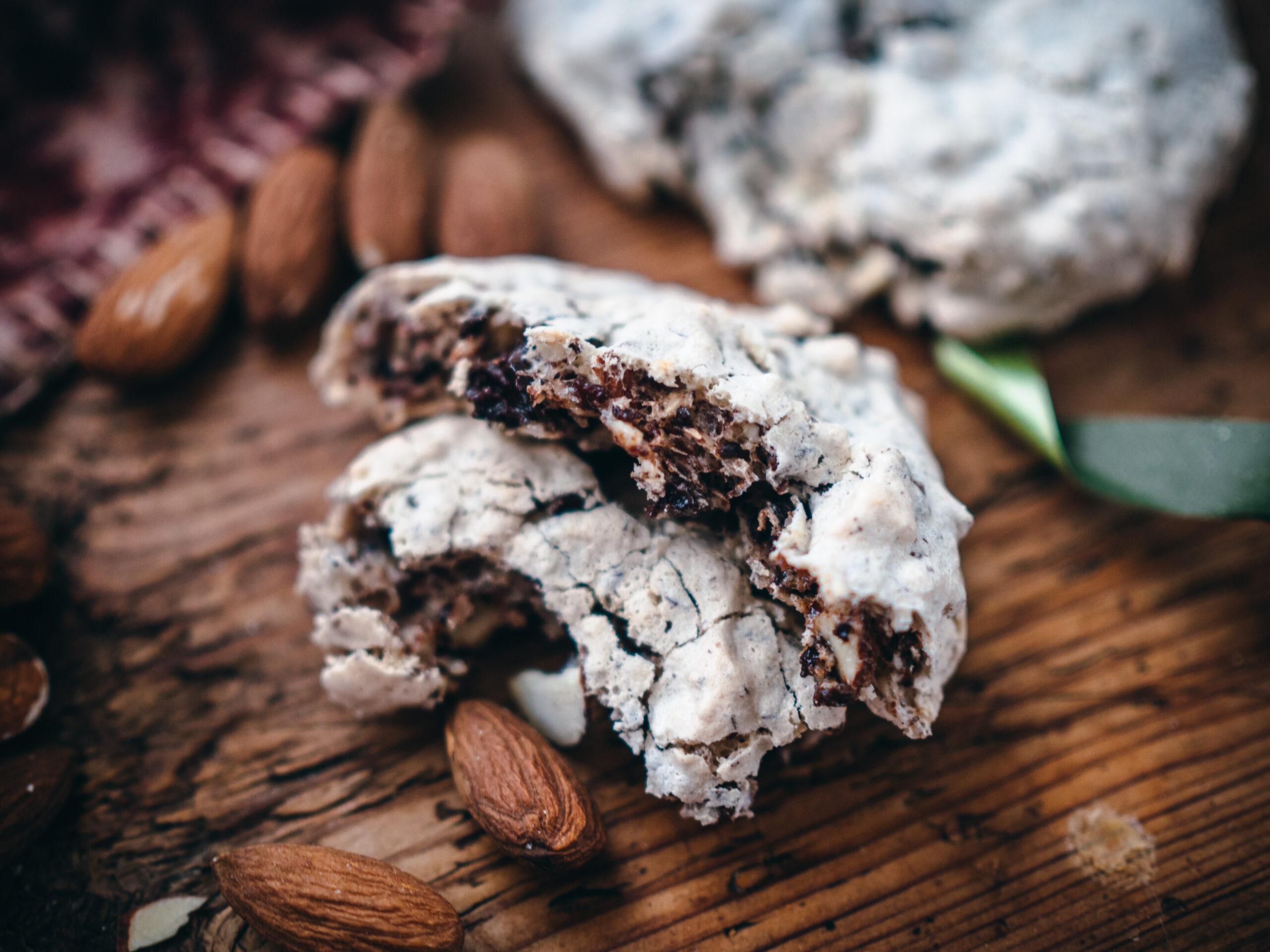
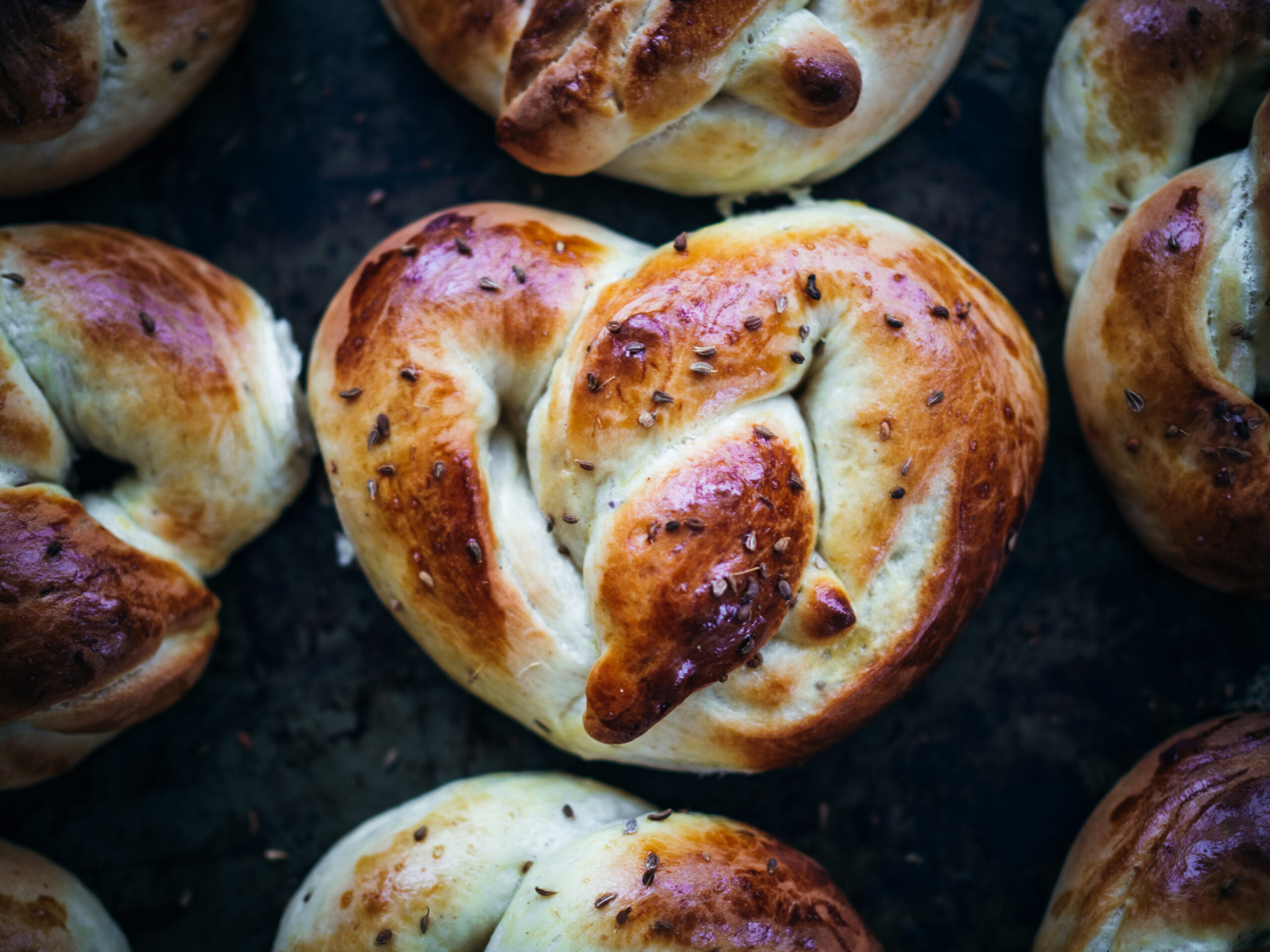
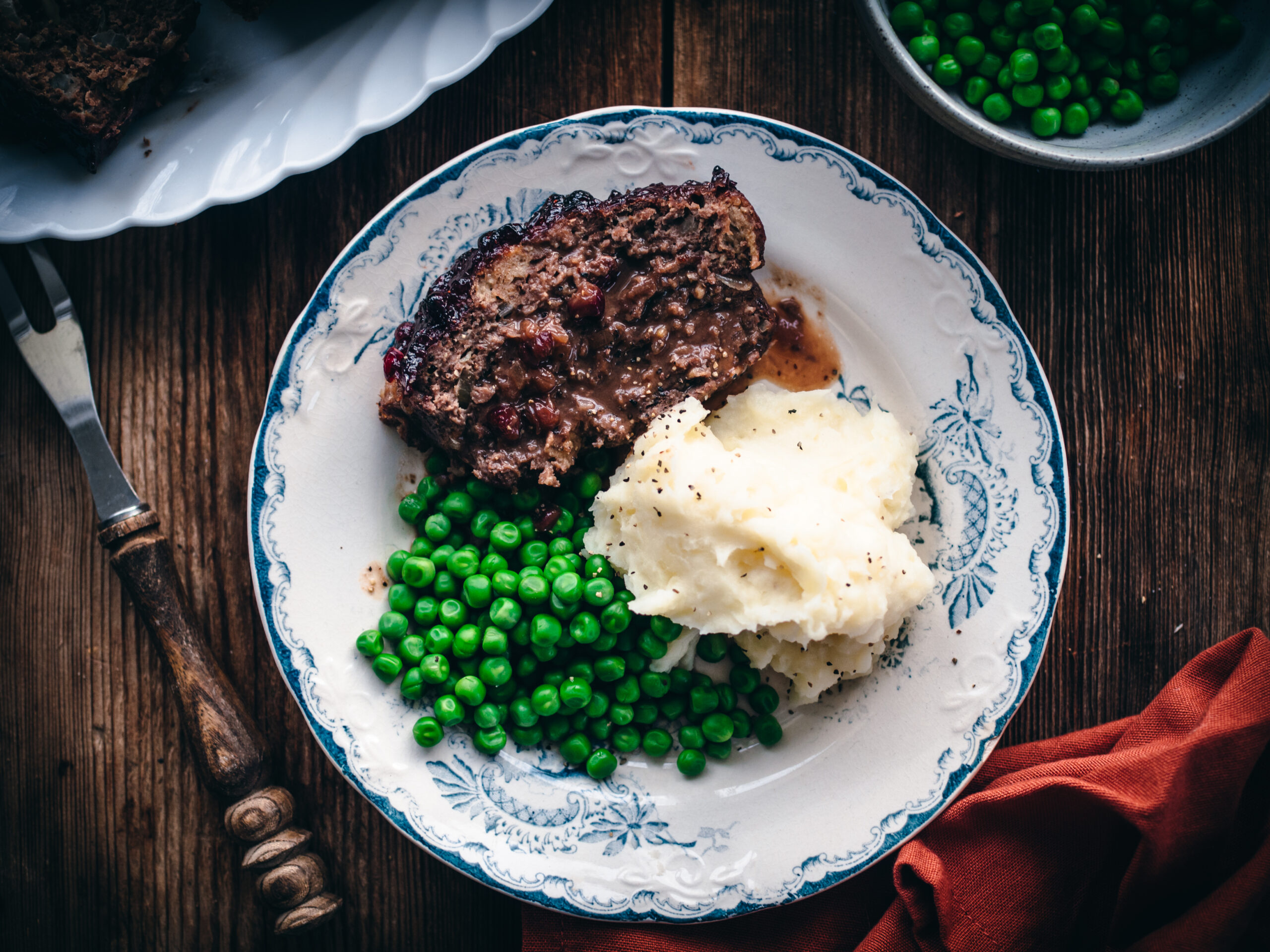
I’ve never been a “porridge” person but I could definitely tuck in to this!
This is an easy dish to fall for! 🙂
This sounds divine! I’m a huge fan of floyelsgrot, and if this is anything like it, I’m sure it’s wonderful!
Then you’ll love it…perhaps even more so 😉
This looks delicious. Is Semolina the same thing as Semolina flour? I’m trying to find Semolina in the United States and all I can find is Semolina flour.
Hi again Nicole! I answered this in our FB thread, but I thought it was important to answer here as well in case others have the same question.
My answer: “This is such a great question! In Norway, it’s called semulegryn and it’s fine and more white in color – though not as fine as flour. Two example brands in Norway are “Regal” and “Møllerens”. Now, I’ve been trying to research what it would be in the US, but it is a little difficult to be certain because there are some contradictions and I’m not there to actually compare. I’ll keep digging around, but perhaps knowing the Norwegian name and brand will help guide a little.”
It is 2024 & I am reading this for the first time. I believe here in America, we would use Cream of Wheat for the ‘grind’ or ‘product’ that your recipe uses.
Welcome! Cream of Wheat is different from semolina, so I would not substitute it in place of semolina. Look for semolina flour from brands like King Arthur and Bob’s Red Mill. 🙂
Good Morning.
A brutally cold Minnesota winter was the impetus for a February Norwegian dinner. I made your aquavit cocktails with your hearty crisp bread with gjetost. Smoked trout mousse with flatbread, your cauliflower soup followed by the reindeer stew (shipped in meat from Indian, Alaska) with Sami bread. I followed it all up with the rustic pear tart. I was an amazing evening with friends.
Thank you for your recipes.
Hi Jenny! I am so happy to hear that – I was just waiting to hear from you again to see how it went! By the way, I think you put together a great menu. I would spend an evening with you anytime!
It looks very yummy.
Thanks for sharing such a delicious recipe with us.
Does it work to cook this in a crock pot?
Great question. I have never tried it in a crock pot, but I imagine it would work since you can cook almost anything in them. I wouldn’t know where to begin advising on time, but if you try it please let me know how it turns out.
Nevada i have a question. If i m to buy semolina here in the states what would I be looking for. Would this be the same as cream of wheat or finely ground einkorn/ spelt /wheat berries ? I think all i would be able to find locally would be semolina flour 00. Unless you know a website for scandanavian ingredients in the states. Thank you. definitely looking forward to making this recipe ( thi since i can’t have dairy i will figure out substitutions) . Thank you again Nevada
Hi Susan! This is such a great question. In Norway, it’s called semulegryn and it’s fine and more white in color – though not as fine as flour. Two example brands in Norway are “Regal” and “Møllerens”. Now, I’ve been trying to research what it would be in the US, but it is a little difficult to be certain because there are some contradictions and I’m not there to actually compare. I’ll keep digging around as well, but perhaps knowing the Norwegian name and brand will help guide you a little.
This sounds delish! When you are coking this for 2 to 3 hours, do you cover with a lid or not?
No lid 🙂
I’ve made this twice now using Bob’s Red Mill Semolina flour, which does have a slight yellow tint compared to images listed, but appears to have the same texture. It’s incredibly delicious! I’m so glad I came across your recipe! ☺️
So happy to hear that! 🙂
This sounds like an amazing treat especially during the winter. I am from Indiana and having a hard time finding this locally. I found this brand-
Ziyad Coarse Semolina Wheat- on Amazon. Is this what I am looking for?
Hi! It’s hard to tell from the images on the Amazon page, but it does look coarser than I would use. I see that King Arthur has semolina flour, which looks to be the right texture and is available online to order.